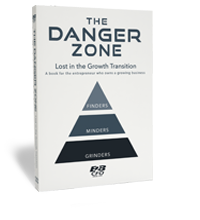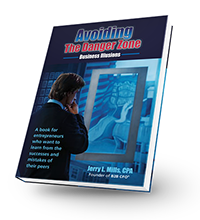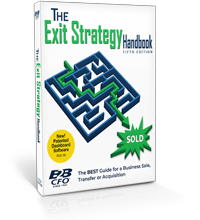From NewsdayPlan ahead: Create an exit strategy
Plan ahead: Create an exit strategy Jamie Herzlich jherzlich@aol.com Exiting your business may be the farthest thought from your mind, and you’re not alone in that. In fact, about 70 percent of small-business owners have no exit strategy, according to a Securian Financial Group survey. One of the top reasons? “Business owners are so focused on the day-to-day tasks of running their business that they haven’t devoted the time necessary to implement a comprehensive exit plan,” says Andy O’Brien, director of client solutions at Securian, a St. Paul, Minnesota-based financial holding and services company. Only 24 percent of business owners Securian surveyed had a formal exit strategy in place, but this is an oversight, O’Brien says. Lacking a formal exit plan will make it difficult for them to ensure their objectives will be accomplished, he notes. ¦ Plan ahead: So how soon should you start planning your exit?Years before you plan to retire, says Jerry Mills, author of “The Exit Strategy Handbook” (B2B CFO; $15) and founder and CEO of Mesa, Arizona-based B2B CFO, which provides exit strategy services.
Eye targets: Small businesses “should always try to understand and identify who the potential buyer will be,” he notes. It takes about two to three years to create a good exit strategy. Consider who will buy your company (employees, say, or a competitor), why, and how much they will pay, Mills says.
Team up: Then create a strategy and team to help target/sell the business to that buyer. This team would include the business owner, a team manager, perhaps a mergers and acquisitions firm or investment banker, attorneys, and tax specialists, says Mills. Bringing a wealth manager in early on is important too, because the owner needs to know how much he or she needs to live on, he notes. “The more time you have to plan, the better the outcome will be,” says Mike Williams, a partner at Port Jefferson-based Michael C. Williams CPA PC and founder of Business Equity Solutions LLC, an exit planning firm.
Money and mental matters: When planning an exit strategy, consider both the monetary and mental readiness sides, says Williams, author of “Business Owners Beware: Sell Your Business Now! (Before it’s too late!)” (Create Space; $17.95). Basically, owners need to consider what they are going to do afterward and whether they are prepared to leave their business’ lifestyle, he says. “There have been a lot of transactions that never came to fruition because the owner backed out at the last minute,” he says.
Clean up: Regardless if you’re selling one year or 10 years from now, experts advise getting your business in order. Gather at least three years of tax returns or financial statements, clean up any unsettled issues such as lawsuits, and shed obsolete inventory, Williams says. “It’s sort of like all the home repairs you do before selling a home,” O’Brien adds. This is good practice even if you don’t have immediate plans to sell ? you never know when opportunity will knock. Andrew Hazen wasn’t planning to sell his digital marketing agency, Prime Visibility in Melville, when he was approached by PV Media Group in 2007 to purchase it. He sold his 8-year-old firm to them but then bought an interest in PV Media, staying on to run Prime Visibility for another four years before PV Media was purchased in late 2011 by Blinkx. Hazen, now co-founder of Angel Dough Ventures in Hicksville, an early-stage seed fund, took that final opportunity to fully exit the company to pursue other entrepreneurial endeavors. “While I don’t start a business with the intent to sell it, I put processes and procedures in place so the business can operate without me,” he notes. “If you want it to be sellable, it needs to operate with or without you.”
TOP EXIT PLANS ¦ Sell to a third party (33%) ¦ Close or wind the business down (25%) ¦ Transfer the business to a family member (20%) ¦ Sell to a partner or key employee (20%) Source: Securian



